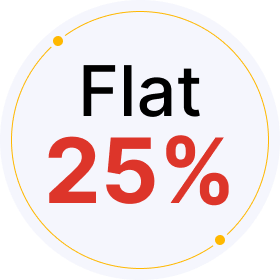
- Blockchain Council
- October 28, 2024
AuraFlow is an open-source AI model made to create images from written descriptions. Created by Fal AI, it offers an alternative to popular models like Stable Diffusion 3 (SD3). Released in 2024, AuraFlow gained attention for its openness, licensed under Apache 2.0, which means developers can modify and use the model freely. Though still in its beta phase, it’s already showing potential, especially in terms of performance and customization options.
How AuraFlow AI Operates
AuraFlow AI uses a flow-based structure to transform text descriptions into detailed images. Put simply, it reads written input and generates visuals that closely resemble the input description. This is possible due to the training it received on large datasets, covering various image sizes, such as 256×256, 512×512, and 1024×1024. One standout feature of AuraFlow is its GenEval score, which measures the quality of its output. Currently, with techniques that enhance prompts, the model scores as high as 0.703, ensuring precise and detailed image creation.
Flow-based models work by mapping out the probability distribution of data, allowing them to generate complex visuals based on descriptive text. AuraFlow’s training involved significant computational power over several weeks, which allows it to perform consistently across different types of image generation tasks.
Key Features of AuraFlow AI
AuraFlow offers several unique elements, primarily because it’s an open-source model, encouraging community-based improvements. Some notable aspects include:
Open-source License
Released under the Apache 2.0 license, AuraFlow is entirely open-source. Unlike more restrictive models like SD3, it gives users the freedom to modify and enhance the model without legal restrictions. The model’s weights are available on platforms like Hugging Face, and there’s active support from the community through places like Fal’s Discord server.
Flow-based Design
The flow-based architecture gives AuraFlow more control when transforming input into images. This design is especially useful in generating artistic or creative visuals, making it a great fit for abstract or imaginative image prompts.
Prompt-Enhancement System
A popular feature of AuraFlow is its prompt-enhancement system, similar to models like DALL-E 3. This system refines user input, ensuring the resulting image is both detailed and accurate.
Multiple Image Resolutions
AuraFlow can produce high-quality images with varying resolutions. The model supports different sizes, from small square images to full landscapes or portraits. This flexibility allows users to create images tailored to specific needs. It also lets users customize settings such as image resolution and the number of inference steps for more control.
Integration with Other Tools
AuraFlow easily integrates with other platforms, like ComfyUI, which is ideal for users wanting to build their own workflows. This adaptability makes it a strong choice for those who want to combine AI-generated images with other tools or projects.
Getting Started with AuraFlow
If you want to give AuraFlow AI a try, it’s simple to get started by downloading the model from platforms such as Hugging Face. The installation process requires setting up a few dependencies like Torch and Transformers. Once set up, you can start generating images by writing short Python scripts that define the text input and other parameters, like image size and guidance scale.
Here’s a simple guide to install and run AuraFlow:
- Install Libraries
You’ll need a few Python libraries, including Transformers and Diffusers, which can be installed using the following commands:
pip install transformers accelerate protobuf sentencepiece
pip install git+https://github.com/huggingface/diffusers.git
- Set Up the Model
After installing the libraries, load the AuraFlow model from Hugging Face:
from diffusers import AuraFlowPipeline
import torch
pipeline = AuraFlowPipeline.from_pretrained(“fal/AuraFlow”, torch_dtype=torch.float16).to(“cuda”)
- Generate Images
To create an image, input a prompt. For instance, if you want an image of an iguana:
image = pipeline(
prompt=”close-up portrait of a majestic iguana with vibrant blue-green scales”,
height=1024,
width=1024,
num_inference_steps=50,
guidance_scale=3.5,
).images[0]
If you don’t have a powerful GPU, you can try AuraFlow through a web-based demo available on Fal’s website, which lets you experiment without the need for local setup.
Pros and Cons of AuraFlow
Pros:
- Completely open-source: Its Apache 2.0 license allows for easy customization.
- High-quality visuals: AuraFlow excels in creating detailed, imaginative visuals, especially in creative contexts.
- Community support: With contributions from developers and researchers, it’s continuously evolving.
- Versatile resolutions: It can handle multiple image sizes and aspect ratios.
Cons:
- High resource demands: AuraFlow requires substantial computational power, needing GPUs with at least 12GB of VRAM.
- Still in beta: As it’s actively being developed, users may face occasional bugs or limitations.
- Not yet fully refined: Compared to SD3, AuraFlow doesn’t always deliver the same precision for more structured visuals.
Pricing
AuraFlow AI is free for non-commercial use, as it’s under an open-source license. Users can download and experiment with it without any fees. However, running it at full capacity requires high-end hardware, particularly powerful GPUs. Users who plan to use it on cloud platforms may need to pay for the necessary computational resources. For commercial use, you should contact Fal’s team regarding licensing requirements.
Recent Updates
As of October 2024, AuraFlow v0.2 has been released, bringing better efficiency and reducing VRAM demands for lower-end GPUs. However, it still requires more power than some of its competitors. Fal AI has hinted at lighter versions in the future to address this issue. Additionally, AuraFlow has achieved significant milestones, scoring 0.703 on GenEval, reflecting its progress toward better quality, especially in creative tasks. The feedback from users continues to influence its development significantly.
Though still in beta since 2024, AuraFlow’s performance is already matching that of industry leaders like Stable Diffusion 3. With more updates expected, its stability and features are likely to improve in the near future.
Final Thoughts
AuraFlow is a powerful, open-source tool for AI image generation. It offers flexibility, high-quality output, and customization, making it especially useful for creative tasks. While it’s still in beta and resource-heavy, its development is moving forward quickly. If you have the right hardware, AuraFlow AI is definitely worth exploring for anyone interested in AI-generated visuals.


































































 Guides
Guides News
News Blockchain
Blockchain Cryptocurrency
& Digital Assets
Cryptocurrency
& Digital Assets Web3
Web3 Metaverse & NFTs
Metaverse & NFTs
